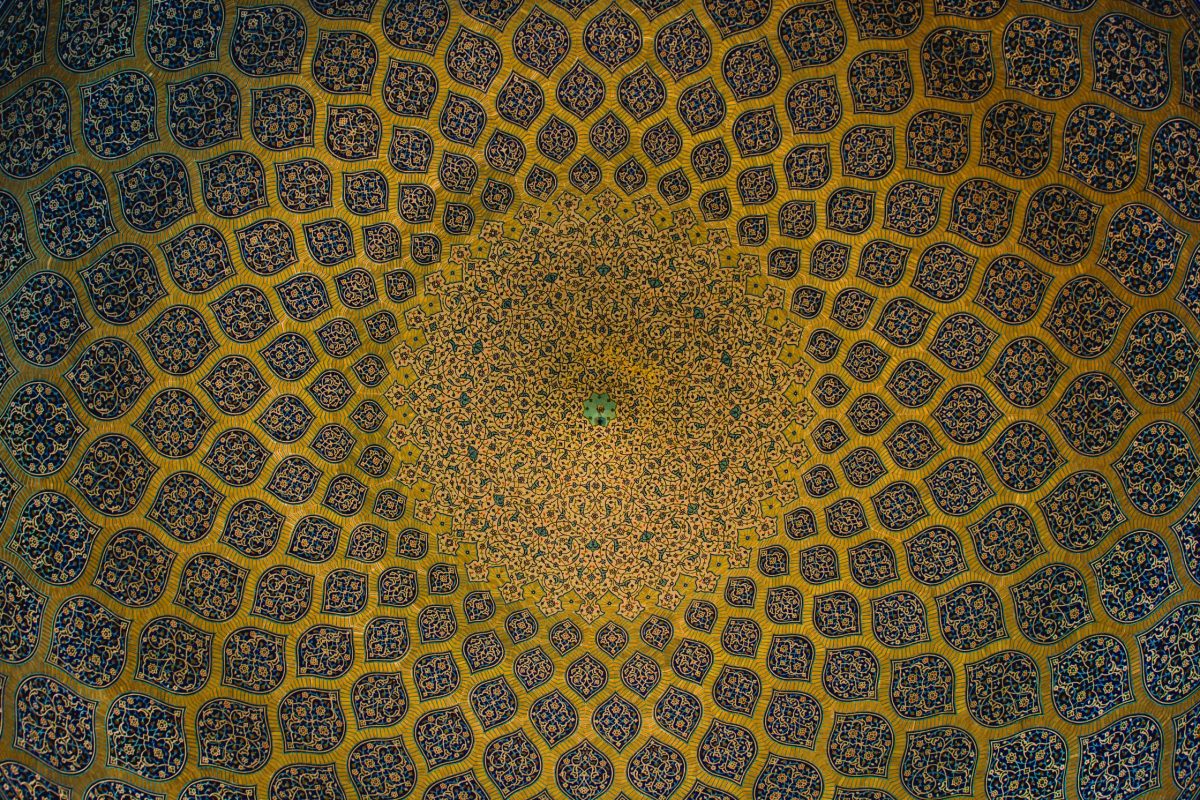In fall 2018, Associate Professor of Middle Eastern Studies and Art & Art History Stephennie Mulder announced to her Arts of Islam students that she was switching things up and scrapping their final research paper. Instead, she said, they would all participate in a Wikipedia edit-a-thon, with the goal of better capturing and presenting the richness of Islamic art on one of the world’s most visited websites and most utilized sources of information. She also started a Twitter hashtag: #StudentsOfIslamicArt.
“I realized the assignment could potentially have much deeper significance,” says Mulder.
Other universities in the U.S. and abroad joined in, as did the Shangri La Museum of Islamic Art, Culture, and Design in Hawaii. The #StudentsOfIslamicArt Twitter feed soon became a space of glowing student comments about how much they enjoyed the assignment; photos of students working on laptops, intensely focused on uploading articles; and final tallies capturing what students had accomplished. The day the inaugural class’s edits went live, says Mulder, was her favorite day teaching, ever.
Four years later, enthusiasm for the edit-a-thon remains strong. Last fall, students at The University of Texas at Austin alone made 776 edits, inserted 224 references, and wrote nearly 24,000 words for Mulder’s course Arabs and Vikings: Art and Culture in the Global Middle Ages. Since the articles went live, they have garnered over 40,000 page-views.
This kind of work is essential, says Mulder, because while anyone can edit a Wikipedia article, the platform is still disproportionally edited by white men, and implicit bias shows up not only in the content of the articles but also in the amount of editorial attention each article receives. She points out that the entry on a European work of architecture such as Chartres Cathedral, which was added in 2002, is highly accurate, whereas the entry on the Funerary Complex of Sultan Qaytbay, added in 2014, is neglected in terms of quality and accuracy.
Over the course of a semester, Mulder guides students through training modules on how to become skilled Wikipedia editors. In addition to learning how to use the platform, students learn how to assess and gather quality sources, fill in information gaps, spot factual errors, write in an unbiased, neutral tone, and work collaboratively to ensure that people seeking information on Islamic art history click on high-quality and engaging articles.
In addition to refining their digital literacy, Mulder’s students learn how to better navigate UT Austin’s expansive library system. The breadth of the libraries’ holdings often comes as a pleasant shock to the students, says Mulder, as they are so much more accustomed to just looking up information online. On one library field-trip, one of Mulder’s students was awestruck: “None of these books are on Google!” Mulder has noticed that students routinely stay after class to browse and wander through the stacks, often leaving with an armful of books.
As part of their assignment, students are expected to look not just for factual errors but for sparse areas lacking current research. In a video posted to #StudentsofIslamicArt’s Twitter thread, Caroline Ballay, a sophomore art history major, recounts the wild-goose chase her group went on to fill in details about the Salerno Ivories. The ivory plaques, which date back to around the 11th or 12th century, depict scenes from both the Old and New Testaments and contain stylistic features of early Christian, Byzantine, and Islamic art. First, the group discovered that the main source for the article dated back to 1980. They needed to find more recent scholarship, which turned out to be more challenging than they anticipated. They requested a book from UT’s Fine Arts Library through international library loan. “It was such a relief to actually find a book on the Salerno Ivories because there is not a lot out there,” says Ballay. When the book arrived, it was printed in Italian. Luckily, a class- mate who studied Italian could translate. When the article was complete, Ballay says she was proud to share the Salerno Ivories article on her Twitter account. “What stuck with me the most was how little we know about certain things but also that people’s own bias can get in the way of research,” she added.
Last fall, Mulder assigned students the task of creating a new article about the mausoleum of the medieval Muslim Queen Shajar al-Durr. It turned out to be the student article that Mulder is most inspired by. Wikipedia articles are generally similar in tone (they have to be), yet in reading the Mausoleum of Shajar al-Durr entry, she feels that the care, time, and attention to detail are utterly palpable. Since the article went live in December, it has already been viewed nearly 400 times.
“One thing I love about this assignment,” Mulder says, “is that students have a sense of ownership over their work.” For students from underrepresented backgrounds, the assignment is especially meaningful because they play an active role in representing their community’s past. “For an educator, that’s incredibly rewarding.”
